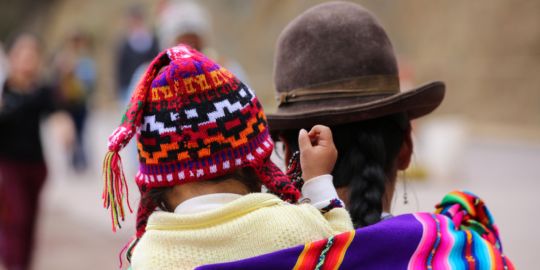Connecting to the internet and using phones in Peru

In Peru, there are more than 30 million mobile phone in use and 10 million users connected to the internet. The telecommunication network is continuously developing. While coverage is most reliable in urban areas, connectivity is slowly expanding to rural locations.
If you're planning to relocate to Peru, check that the region you're moving to is connected as this will be vital for keeping in touch with friends and family, and might also be crucial for your work. Here's a quick guide to getting connected to landlines, mobile phones, and the internet in Peru.
Landlines
Most rented accommodations available in Peru are already equipped with a landline. But if it is not the case, you can visit a branch of your prefered service provider to subscribe for a landline to be installed, although there might be a bit of a wait for technicians to install the hardware. The telephone market is shared by several service providers, with Claro and Movistar being the most popular ones.
You will be required to localize your address on a plan to indicate to the technicians where the landline is to be installed. The request can also be made by phone, but procedures can be quite long.
There are several types of landline subscriptions in Peru. Some service providers provide combined packages for two or more of the following: landline, mobile line, cable TV, and internet at a particular price. Buying these services from the same provider can be more cost-effective.
Mobile phones
On your arrival in Peru, you can purchase a prepaid sim card at any branch of your chosen service provider by producing your identity card. This should work fine on your existing mobile device, as long as it has been unlocked. In general, prepaid sim cards cost around 15 New Peruvian Soles (PEN). In addition to enabling calls and SMS on a local network, some prepaid sim cards include data packages for 3G or 4G. Beware that advertised 4G service will vary widely and may not actually be available in the area where you are. It's worth asking locals and expat groups for advice on which service providers have the best coverage in your area.
Post-paid packages are available, many of which include a mobile device, although there are some for just the connection if you have your own device. You will need to show a residency card and proof of address to sign up for a contract, which usually lasts 18 or 24 months.
Internet
Like with landlines, there are several broadband internet providers which you can subscribe to. In general, you will be required to produce your identity card, your carnet de extranjeria (i.e. your foreign resident card), and proof of address.
Your accommodation may already be wired for broadband, and if not, the service provider will install this for a small fee.
If you're not looking for a long-term internet connection in your new home, there are other solutions, such as OLO, an internet provider which offers a portable device that can be used in your home to provide a wireless internet connection for a monthly charge. Although not as strong as other connections, it's a great temporary solution for getting connected.
If you don't want to pay for an internet package, you can take advantage of other internet connections in your local area. There are internet cafes in all cities, and even some remote towns and villages, although the connection might be slow. Wifi hotspots are increasingly available in restaurants, hotels, and cafes, and even in some public parks in Lima, although with time-limited usage.
Useful links:
Claro ' Landline, mobile, internet and TV service provider
Entel - Mobile and internet provider
Movistar ' Landline, mobile and Internet service provider
Qnet ' Internet service provider









